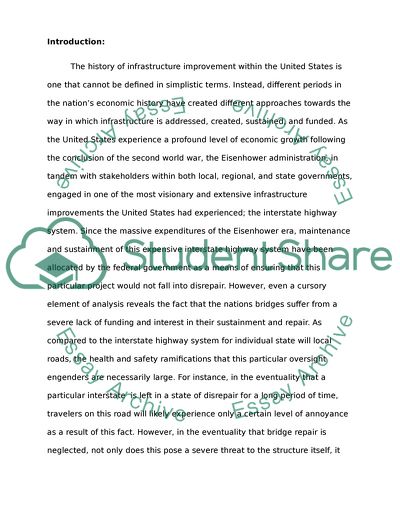Cite this document
(“The Condition of U.S. Bridges Research Paper Example | Topics and Well Written Essays - 2500 words”, n.d.)
The Condition of U.S. Bridges Research Paper Example | Topics and Well Written Essays - 2500 words. Retrieved from https://studentshare.org/engineering-and-construction/1644073-the-state-of-us-bridges
The Condition of U.S. Bridges Research Paper Example | Topics and Well Written Essays - 2500 words. Retrieved from https://studentshare.org/engineering-and-construction/1644073-the-state-of-us-bridges
(The Condition of U.S. Bridges Research Paper Example | Topics and Well Written Essays - 2500 Words)
The Condition of U.S. Bridges Research Paper Example | Topics and Well Written Essays - 2500 Words. https://studentshare.org/engineering-and-construction/1644073-the-state-of-us-bridges.
The Condition of U.S. Bridges Research Paper Example | Topics and Well Written Essays - 2500 Words. https://studentshare.org/engineering-and-construction/1644073-the-state-of-us-bridges.
“The Condition of U.S. Bridges Research Paper Example | Topics and Well Written Essays - 2500 Words”, n.d. https://studentshare.org/engineering-and-construction/1644073-the-state-of-us-bridges.


